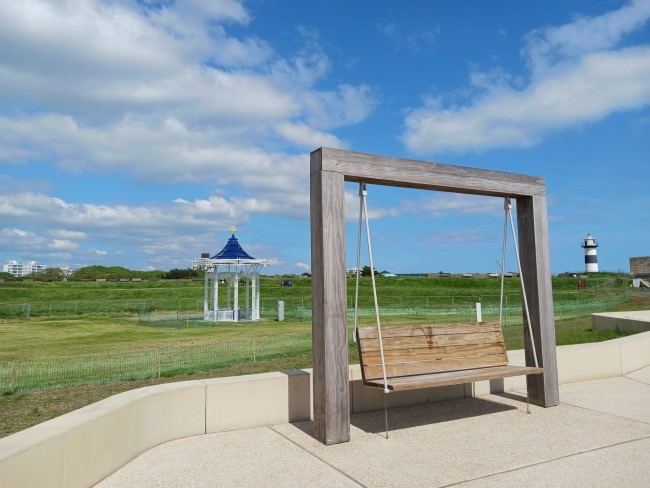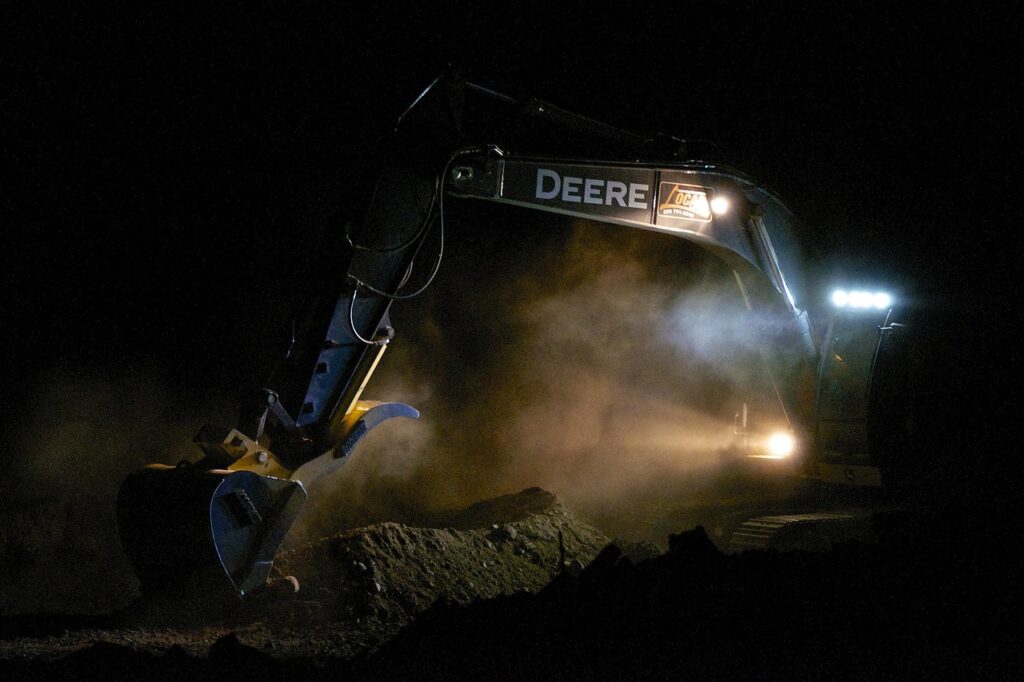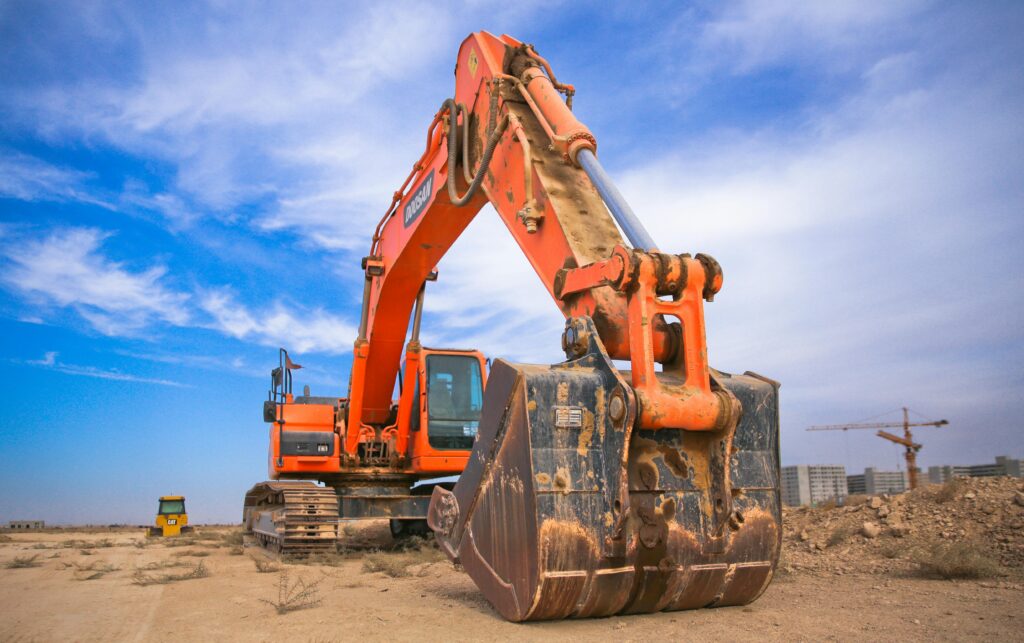The Southsea Coastal Scheme is a once in a generation coastal flood and erosion defence project led by Portsmouth City Council. It is the largest local authority led coastal defence initiative in the UK (budget c.£180M) , spanning 4.5 km from Old Portsmouth to Eastney. Its purpose is to protect more than 8,000 homes and over 700 businesses (the scheme-wide figure is often cited as 10,000 homes/700 businesses ) from rising sea levels and extreme storm surge. Phase One of six frontages (Frontage 1: Long Curtain Moat to Clarence Pier) began in September 2020 and was opened to the public in February 2023. This report focuses on Phase One’s historical, environmental and technical significance, the engineering works undertaken, archaeological finds and construction challenges (including the COVID-19 pandemic), and looks ahead to the next phases (Clarence Pier and Southsea Castle).

Historical Context (Long Curtain Moat and Portsmouth’s Defences)
Long Curtain Moat is one of the last surviving parts of Portsmouth’s historic town fortifications. The Long Curtain (a bastion rampart and dry moat) dates to the late-16th/17th century and formed part of the city’s medieval and post-medieval defences. In the 1660s, Dutch military engineer Sir Bernard de Gomme remodelled Portsmouth’s ramparts and moats (including Long Curtain) to resist sieges. Notably, Portsmouth was the only British town where continuous moat defences were adopted, making the Long Curtain monument “of outstanding interest”. The moat was maintained as a strategic defence through the Napoleonic Wars; famously, Admiral Lord Nelson passed through the brick-lined sally. port under Long Curtain Moat on his final departure from England in 1805. In the 19th century, Southsea’s defences (including Long Curtain) were further modified to face rising threats, and remnants of de Gomme’s work survive here (for example, inscribed granite blocks and a 17th-century revetment wall). The importance of this heritage led Portsmouth City Council to preserve these features in the new scheme .
Over time, much of Portsmouth’s coastal defences (including Old Portsmouth ramparts, Southsea Castle, and artillery batteries) have changed or been lost. The Long Curtain Moat survives as a dry moat fronting King’s Bastion and Spur Redoubt (scheduled monuments). It also borders Southsea Common and the Clarence Pier area, where subsidence and erosion had damaged older sea walls. The coastal scheme thus integrates climate change resilience with sensitive restoration of historically significant structures. As Portsmouth’s Project Manager noted, “the Long Curtain Moat project was fundamental to preserving Portsmouth’s nationally significant heritage and crucial to maintaining coastal defences”.

Phase One Overview (Long Curtain Moat to Clarence Pier)
Phase One (Frontage 1: Long Curtain Moat – Clarence Pier) commenced in September 2020 after council funding and Environment Agency support were secured. This stretch contains extensive heritage assets: the Long Curtain Moat itself, Spur Redoubt, King’s Bastion, and adjacent Scheduled Monuments (including the Square Tower and Point Battery). The works were designed to improve defence heights while enhancing public space and protecting heritage. The new flood defences here now safeguard thousands of properties inland. Southsea Coastal Scheme Director (Guy Mason) reported that upon opening in Feb 2023 “there was an excellent public response” and that the new defences withstood Storm Ciarán in November 2023 as intended.
Construction in this phase created a continuous new sea wall and raised promenade. The existing WWII-era seawall was removed and replaced by a sheet-piled and rock-armour structure, built several metres seaward of the old line. The promenade was both widened and raised to raise its crest level (from +3.4m to +4.0m ODN) in order to provide a 100-year design life. New feature lighting, seating and landscaping (including coastal planting and 18 designed inter-tidal “rock pools”) were added to improve public amenity. Two new pedestrian bridges were installed for access across the moat. (The existing Long Curtain footbridge to Old Portsmouth had been separately restored by 2019.) Importantly, the Clarence Pier car park and access were also reinstated at the completion of works.
The works reflected extensive design innovation and heritage sensitivity. All new concrete and masonry was selected to match the original defences: specifically, Portland/Purbeck limestone from the same seam used in the 1600s, and carefully sourced granite units. Historic England reviewed and approved these materials after over a year of sampling and testing. The new structure is clad in stone to blend with the restored red-brick walls of the 17th-century Spur Redoubt. Construction methods were adapted to protect heritage: for example, floating work platforms (pontoons) were used to avoid beach damage, and much of the cleaning and repointing of the old moat wall was done with hand tools and even steam-cleaning (an approach approved by Historic England) to reveal the original white limestone. As the Council noted, “materials were meticulously sourced” so that the new seawall “closely replicated the original sea defences”, demonstrating a pioneering engineering approach in a sensitive setting.
Construction highlights for Phase One included:
- Demolition of the old seawall and construction of a new sheet piled and clad defence wall (525 m of sheet piles, totalling 6,300 m² / 12 km if laid end-to-end) .
- Placement of 11,474 tonnes of imported rock armour (Norwegian granite) against the seaward face .
- Fabrication and installation of 136 precast concrete parapet units (118 standard units + 18 special units) .
- Placement of 5,700 tonnes of in-situ reinforced concrete (for levelling platforms and foundations) .
- Formation of 18 engineered intertidal rock pools for biodiversity .
- Installation of two new steel framed footbridges, coastal lighting, planting and seating .
- Restoration of the Clarence Pier car park and path .

Archaeology and Heritage Management
From the outset, heritage contractors (Wessex Archaeology) provided expert oversight. A baseline study was done, and archaeologists monitored all earthworks and excavations. Photogrammetric recording of the existing ramparts (the Scheduled Ancient Monument) was carried out before construction began . During excavation, multiple significant finds emerged. In December 2020, sections of a 17th-century revetment wall and slipway (west of Spur Redoubt) were uncovered by storm surge. Analysis confirmed this fabric dated to de Gomme’s fortifications (“late 17th century redesign” ). The stones bore banker’s marks (stonecutters’ initials), evidence of their age .
As construction progressed, the team discovered further heritage remains. In early 2021, portions of the original moat wall and bastion appeared during works at Long Curtain. These were left in situ and recorded: one section was restored on site and will serve as a historic display feature. All discoveries have been meticulously documented. For example, Wessex Archaeology reported: “The remains of all the historic structures were recorded and where possible preserved in situ”. A Victorian copper bell was found at Southsea Castle carpark (Castle Field) during trenching for utilities in 2022 , and a fragment of the early-20th-century promenade was recovered. Altogether, finds ranged from 17th-century walls to Edwardian-era promenade fragments, Victorian pottery sherds and bottles. All artefacts and features were logged, with specialist conservation (e.g. gentle steam-cleaning of stone walls and laboratory analysis of metal finds) carried out as needed .
These heritage works influenced engineering decisions. On one occasion a 17th-century wall was found directly in the planned line of the new seawall. Project Director Guy Mason recalled: “We had to work quickly, not only to protect the remains during wild weather and tidal conditions, but to provide an alternative to the proposed works. After consultation with Historic England and Wessex Archaeology, we came up with the contingency plan to move a section of planned seawall alignment some two to three metres forward in order to preserve the old wall in situ”. Historic England’s inspector Iain Bright praised this approach: “These 300 year old remains provide a tangible link to the story of Portsmouth’s historic defences… [we’re] pleased to have worked successfully with the Southsea Coastal Scheme and Wessex Archaeology to ensure that this discovery is preserved for posterity”. In summary, the scheme team combined real time archaeological monitoring with adaptive design solutions so that engineering could proceed “without significant delays” while safeguarding heritage .
As heritage consultant Alex Godden of Wessex Archaeology noted, some finds were “exciting” and well preserved, adding to the story of Portsmouth’s defences. The project reports and site interpretation will incorporate these finds: information boards are being prepared to explain the exposed 17th-century walls and other features to the public when the promenade reopens. Overall, Phase One has set a precedent in working with history, not against it: ancient stonework has been stabilised or sympathetically integrated into the new works, rather than destroyed.

Environmental and Sustainability Measures
The scheme aimed to be environmentally responsible. Coastal ecology was protected through design and construction methods. For example, the intertidal rock pools created along the revetment serve as habitats for littoral species. During pre-construction, a temporary habitat was established for Brent geese (a protected migratory species) whose winter grazing ground was affected by the works. VolkerStevin reported that, after liaison with Natural England and local conservation groups, the works team fenced an adjacent area, deployed “decoy” geese and audio cues to herd the birds to a new refuge. This ensured the internationally designated special protection areas nearby were not disturbed by construction.
A central sustainability initiative was the zero waste policy. A mobile processing plant was set up at the site to crush, sort and stockpile excavated material (concrete, stone and beach shingle) for reuse in future phases. Rather than trucking demolition spoil to landfill, nearly all material was recycled into the scheme itself (for example, raising promenades on later frontages). This recycling approach is estimated to save c.£4 million in disposal costs and reduce carbon by about 4,000 tonnes, as well as eliminating roughly 25,000 truck movements through Portsmouth . The team also refined design to reduce material use: for Frontage 4 (Southsea Castle), a value-engineered solution was introduced to use lessrock for the revetment .
Construction practices were chosen to minimise environmental footprint. The use of pontoons (mentioned above) reduced on beach disturbance. Where possible, hand tools were used for delicate masonry work. Concrete works were scheduled to minimise impact on adjacent SSSI sites (using turbidity screens and monitoring). In all, Phase One achieved net environmental enhancements: erosion is now better controlled, and local wildlife habitats (beach, mudflats and floodplain) have been protected throughout the works.

Construction Challenges and Responses
Phase One was delivered under challenging conditions. The COVID-19 pandemic struck shortly after contract award. Portsmouth’s contractor (the VolkerStevin-Boskalis JV) credits early digital co-location of the design team as key to continuity. As the country locked down, the team “used digital tools to stay in touch and maintain the integrated approach”. Virtual meetings allowed engineers, planners and council staff to continue collaborating on design reviews and approvals. In practice, much of the detailed design for Frontage 1 had already been finalised when lockdown came, but the team also completed additional site investigations and build ability checks remotely. Overall, COVID caused only minor slippage: by late 2020 work proceeded on schedule and the public opening target (early 2023) was still met.
The project also had to manage risks inherent to marine construction. Extreme weather (storms and high waves) periodically halted beach operations. However, because the new sheet piles were driven quickly, critical waterproofing was achieved before stormy winters. The resilience of the works was demonstrated in late 2023 when Storm Ciarán hit: “it was great to see the new sea defences performing as they should” (Mason) .
Another challenge was stakeholder management. For example, in late 2024 the council decided not to proceed immediately with a Clarence Pier floodwall, citing a £20 million cost (see Future Phases below). The Pier’s owners were vocal about this decision, and debate ensued in the local press. The scheme team had to balance heritage, environmental and community concerns at every stage. Public engagement (exhibitions, newsletters and site tours) helped build local support. Notably, the Long Curtain Moat restoration attracted positive attention: a local awards panel noted it had “made a difference to the appearance” of the moat , and residents cast 421 votes in a public choice awards poll recognising the scheme .
Finally, regulatory challenges (planning consents, environmental permits, and Scheduled Monument consents) required careful liaison. The Wessex team worked closely with Historic England and the council’s archaeologists from the outset, flagging potential conflicts. This proactive approach (with fortnightly coordination meetings) ensured that changes (such as shifting the wall alignment) were agreed without delaying the overall timetable. In summary, through early contractor involvement, integrated planning and adaptive management, the project mitigated the major challenges (pandemic, archaeology, weather, and stakeholder concerns) without derailing Phase One.
Achievements and Statistics
Phase One delivered robust defences and new public amenities. In measurable terms:
- Protection: The new structures reduce flood risk to thousands of properties. Overall, the Southsea scheme will protect over 10,000 homes and 700 businesses (locally around Long Curtain, risk had already exposed ~8,077 homes and 704 businesses ).
- Materials: 525 m of sheet piles (12 km driven) and 11,474 tonnes of Norwegian rock were installed. Over 5,700 tonnes of concrete were cast, and 136 large precast parapet blocks placed .
- Ecology: Eighteen intertidal rock pools were created for marine life. Nearly all excavated material (concrete, rubble and shingle) was reused via the on-site processing plant, exemplifying the zero-waste commitment .
- Public amenity: The promenade was made 4 m wide, stepped in places for seating, and planted with sustainable coastal flora. Two new steel bridges and upgraded walkways vastly improve access. The completed promenade has received an enthusiastic public response (Mayoral ribbon-cutting in Feb 2023) and awards recognition (Environment Agency Flood & Coast Excellence Award, 2024 ).
These accomplishments were underpinned by innovation and efficiency: the waste-processing system is projected to save ~£4M in disposal costs and cut carbon by ~4,000 t. Temporary measures like the goose refuge prevented habitat loss. In short, Phase One not only delivers stronger sea defences but also transforms the seafront: an enhanced public realm stretching from Long Curtain Moat to Clarence Pier, uniting recreation with resilience

Future Phases: Clarence Pier and Southsea Castle
Looking ahead, Frontage 2 (Clarence Pier) and Frontage 4 (Southsea Castle) are the next major stages. Clarence Pier (sub-frontage 2) will focus on flood defence barriers appropriate to the amusement park setting. Preliminary designs call for sloping earth bunds and concrete walls, with the promenade road raised to house floodgates. These gates would be closed in a storm to isolate the Pier. However, as of late 2024, Clarence Pier works are under review: council reports note that fully protecting the Pier would add some £20 million to the project cost. (Discussions continue with stakeholders on value and timing.)
Southsea Castle (Frontage 4) lies between Clarence Pier and the Brambles Café. Work here began in January 2022 and is well advanced. Construction crews have placed about 145,000 tonnes of rock armour, including a new 96 m rock groyne to defend the adjacent beach. A new split-level concrete promenade – the so called “Theatre of the Sea” – has been built in front of the castle. This amphitheatre-like design provides broad seating steps facing seaward, as seen in the photograph below. The Frontage 4 works were on schedule for completion in spring 2024. All aesthetic elements (cobbled walls, historic plinths) are being incorporated: for example, a 17th-century Dutch-designed wall uncovered at the castle is now safely enclosed under the new platform with an interpretive panel.
Future design highlight: The Southsea Castle frontage features a split-level stepped promenade called the “Theatre of the Sea”, with broad terraces and seating overlooking the Solent (photo below shows the finished steps in 2024). This innovative promenade both strengthens the base of the seawall and creates a scenic public space.
Image: The new stepped promenade at Southsea Castle (Phase 4, frontages 4), showing broad terrace steps integrated with the new sea wall. The heritage castle bastion is visible at right .
In summary, the next stages will replicate Phase One’s blend of engineering and heritage care. Southsea Castle’s works will restore long-lost seafront access while buttressing the historic fort. Clarence Pier’s future works (once approved) will similarly balance flood protection with minimal impact on a busy leisure facility. Together, the six phases will complete by ~2028, securing Portsmouth’s coastline for a century.
